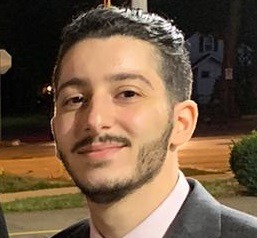At What Age do Cats Lose Baby Teeth?
- Tarek Tabbara

- May 15, 2022
- 4 min read
If someone told you that kittens lose their first set of teeth, would you believe them? Probably not. Who starts a conversation with a random cat fact and why are you talking to me? Get away from me, you creep. So first, an introduction: Hi, I’m Tarek and I breed Persian kittens, would you like to hear a cool cat fact? Kittens lose their first set of baby teeth and grow permanent ones just like people do!

Maybe you haven’t noticed it happen, after all, your kitten won’t run up to you with tooth in hand announcing the event like an elementary schooler would. But maybe you’ve seen that your kitten is missing a tooth and are concerned as to how this could have happened.
Cats have similar dental growth development like other mammals, where they will have an initial set of teeth that are replaced with a set that they will keep for the rest of their adult lives. How this happens follows a predictable timeline.
At What Age Do Kittens Lose Baby Teeth?
Kittens will start to lose their first set of teeth when they are three months old. This process will take several weeks and your kitten should have their permanent teeth by the time they are six months old. We’ve outlined the whole process below.

Toothless Gums
Kittens are born without teeth, so if you open their mouth, all you’ll see is their pink tongue and little gums. Since kittens drink their mother’s milk for the first few weeks of life, this isn’t a big deal. You don’t need to chew liquid, obviously. In fact, mom is probably relieved that she isn’t being chomped on and will continue to nurse her kittens without issues because of this. Kittens will remain toothless for the first two weeks after they are born, after which point, they will start to grow in their baby teeth.
Milk Teeth
Your kitten’s first set of teeth, their deciduous teeth, will start to erupt at about two weeks of age. These are often referred to as Milk teeth or Baby teeth. This set of 26 teeth should continue to grow in until the kitten is six weeks old, meaning that the whole process takes a few weeks to complete. Once your kitten has their teeth grown in, they can start to transition to solid food and be weaned off their mother.
Kittens will have twelve total incisors, six on the mandible (lower jaw) and six on the maxilla (upper jaw). These are the smallest teeth you see at the front of a cat’s mouth, and they are comparatively tiny compared to their larger canine teeth. A cat’s incisors are useful for grasping onto food and you’ll often notice that these are the first teeth to become visible in the earliest stages to dental development.
They will also have four total canine teeth, two on top and another two on the bottom. These are the big, pointed teeth and easily rip and tear into food. They are located lateral to the incisors, which is a practical location as these two types of teeth work in conjunction with each other.
Kittens will ten total premolar teeth, six are located on the maxilla and four are on the mandible. These are unlike the premolars humans have, as some carnivores, including cats, will have their premolars (and molars) modified in such a way that they are larger and angled to allow better shearing and cutting of food. These are called carnassial teeth and they glide over each other when chewing, their sharp edges are effective at separating stands of meat apart.
As for molars, there are none, at least not yet. A kitten’s first set of teeth will have zero molar teeth, but they will grow in later on in life with the rest of their permanent teeth.

The Wait
From six weeks to about three months, a kitten will use their milk teeth without any changes. They will happily munch and crunch food (or your fingers) and their teeth should be firmly entrenched in their mouths. You shouldn’t notice any missing teeth at this stage.
Permanent Teeth
At about three months, a kitten will start to lose their milk teeth. This process of losing a baby tooth and replacing it with an adult one will continue until you kitten is at least six months old. A cat’s adult teeth will be in an identical arrangement to their milk teeth, the only exception being that they will now have four molars in the back of the mouth, two on the bottom and two on top. These are often the last teeth to grow in and your kitten may be six months old by the time all of their teeth are fully developed. In total, a cat will have 30 adult teeth.

Once a kitten grows their permanent, adult teeth, they’ll have them for the rest of their lives. If they lose a tooth, it will never grow back and it isn’t normal for an adult cat to have missing teeth. In fact, a missing tooth in an adult cat is usually a sign of dental disease and should be examined thoroughly.
It is important to take good care of your cat's teeth. While you don’t need to take them to the dentist for a yearly cleaning, you can actually brush their teeth yourself. Curious as to how you can train your cat to brush their teeth? Read our method for tooth brushing!



Comments